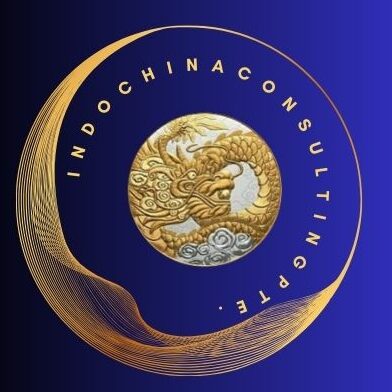When it comes to startup success, two metrics often dominate the conversation: growth vs cashflow. Both are critical indicators of a company’s health, but the question remains—should founders prioritize growth over cashflow? This debate has fueled countless boardroom discussions and investor meetings, as each approach has its merits and risks. In this blog, we will break down the arguments for and against focusing on growth versus cashflow, explore what investors truly care about, and provide actionable insights for startup founders like you.
Why Growth vs Cashflow Matters to Investors
Investors often assess startups based on their potential for significant returns. Growth signals scalability and market dominance, while cashflow indicates sustainability and operational efficiency. Each metric appeals to different types of investors, and the balance between the two can dictate your funding strategy and long-term trajectory.
The Case for Prioritizing Growth
Arguments in Favor of Growth
- Market Share Dominance
- Rapid user acquisition helps secure a dominant position in the market, making it harder for competitors to catch up.
- Example: Companies like Uber and Amazon initially focused on aggressive growth to become household names.
- Higher Valuations
- High growth rates often result in attractive valuations, enabling startups to raise larger funding rounds at favorable terms.
- Example: Tech giants like Facebook and Snapchat attracted investors with their impressive user growth metrics.
- Future Profitability
- Many investors believe that rapid growth today can translate into massive profits tomorrow. They are willing to accept short-term losses for long-term gains.
Risks of Over-Prioritizing Growth
- Cash Burn
- Scaling quickly can lead to unsustainable cash burn rates, jeopardizing the startup’s survival.
- Example: WeWork’s aggressive expansion without a focus on profitability led to a significant valuation drop.
- Operational Strain
- Rapid growth can overwhelm internal systems and processes, leading to poor customer experiences and staff burnout.
- Investor Skepticism
- Investors are increasingly cautious of startups with high growth but no clear path to profitability, as seen in the backlash against some tech IPOs.
The Case for Prioritizing Cashflow
Arguments in Favor of Cashflow
- Financial Stability
- Positive cashflow ensures the company can cover its expenses without relying solely on external funding.
- Example: Bootstrapped startups like Mailchimp have achieved massive success by prioritizing cashflow.
- Investor Appeal
- Some investors prefer startups with a proven ability to generate revenue, as it reduces financial risk.
- Operational Control
- Focusing on cashflow often means slower, controlled growth, enabling founders to maintain more equity and decision-making power.
Risks of Over-Prioritizing Cashflow
- Missed Opportunities
- A focus on cashflow can limit a startup’s ability to capitalize on growth opportunities in competitive markets.
- Lower Valuations
- Startups prioritizing cashflow may struggle to secure high valuations, potentially limiting their funding options.
- Perception of Limited Scalability
- Investors might view cashflow-focused startups as less scalable, reducing their attractiveness in high-growth sectors.
Growth vs Cashflow: Striking the Right Balance
As a founder, you must align your strategy with your business model, market conditions, and investor expectations. Here are actionable steps to find the right balance:
1. Understand Your Investor Audience
- Growth-focused investors (e.g., venture capitalists) often prioritize scalability and rapid user acquisition.
- Cashflow-focused investors (e.g., angel investors or private equity firms) typically value profitability and sustainability.
2. Assess Your Market Conditions
- In competitive, fast-growing markets, a growth-first strategy may be necessary to outpace competitors.
- In mature or niche markets, a cashflow-first approach may yield better long-term results.
3. Set Milestones for Both Metrics
- Create measurable KPIs for growth and cashflow to track progress and ensure balance.
4. Communicate Your Strategy Clearly
- Be transparent with investors about your approach and how it aligns with their goals.
FAQs: Growth vs Cashflow
1. Which do investors value more: growth or cashflow?
- It depends on the investor and the stage of your startup. Early-stage investors typically prioritize growth, while later-stage investors may focus on cashflow.
2. How can I improve cashflow without sacrificing growth?
- Optimize your pricing strategy, reduce operational inefficiencies, and explore alternative revenue streams.
3. Is it possible to prioritize both growth and cashflow?
- Yes, by implementing a balanced approach, such as focusing on high-margin growth or incremental scaling.
4. What are some tools or resources to help me decide my focus?
- Platforms like YC Startup School, Founder Institute, and Indie Hackers offer mentorship, playbooks, and advice from experienced founders. Don’t forget to explore James Spurway’s resources for free and paid tools tailored to startup founders.
Key Takeaways
The debate between growth vs cashflow isn’t about choosing one over the other; it’s about understanding which metric aligns with your goals, market, and investor expectations. By taking a balanced approach and tailoring your strategy to your business needs, you can secure investor confidence and position your startup for sustainable success. Remember, resources like James Spurway’s platform and other online communities are invaluable in helping you navigate these decisions.
